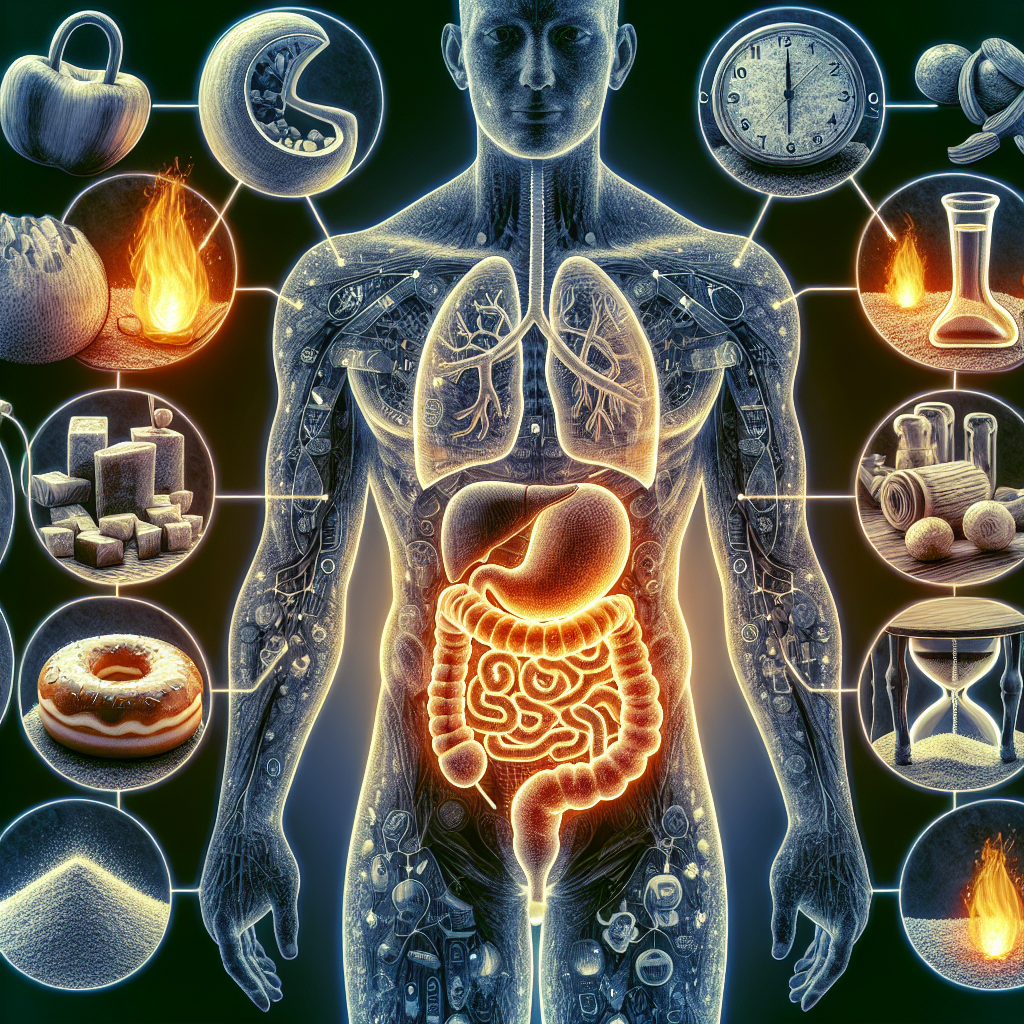Understanding the Ideal Duration of Ketosis for Weight Loss
Stepping into the fascinating world of weight loss, you might be curious to explore the role of ketosis and its effectiveness. The article “Understanding the Ideal Duration of Ketosis for Weight Loss” will thoroughly explain the intricate relationship between weight loss and ketosis. It will shed light on how you could potentially lose weight rapidly within a week and guide you on how long you should maintain ketosis for optimal weight loss. It’s stuffed full of excellent insights, hints, and tips to navigate you through your weight loss journey using ketosis.

Understanding Ketosis
Often thrown around in the fitness world as a buzzword, ketosis is a fascinating capability of the human body. But what exactly is ketosis?
Defining ketosis
“Ketosis” as a term, originates from “ketone bodies,” which are produced by your liver when your body doesn’t have enough glucose to turn into energy. Glucose typically comes from carbohydrate intake and when you reduce or effectively cut off your carb consumption, your body needs to find another source of fuel. That’s when it starts turning fat into ketones, your body’s alternate fuel source.
How the body enters ketosis
For your body to enter ketosis, it needs to run out of its glucose reserves. This is typically achieved by following a low-carb, high-fat diet, limiting carbohydrate intake to around 20-50g per day. After a few days of this diet, your body begins to break down its stored fat into molecules called ketones, effectively switching its primary energy source from glucose to fat.
Signs and symptoms of ketosis
Your body is now burning fat for fuel instead of carbohydrates, and the metabolic shift can present itself in several ways. Common signs and symptoms of ketosis may include: weight loss, increased ketone presence in blood or urine, fatigue, irritability, brain fog, constipation, headache, bad breath or ‘keto breath,’ increased thirst and urine output.
Ketosis and Weight Loss
Reducing reliance on energy derived from carbohydrates and moving towards burning fat instead? That certainly sounds promising for anyone looking to lose weight.
How ketosis aids weight loss
By reducing your carb intake to enter ketosis, you naturally decrease your calorie intake as well. Not only that, but with fat being used as a primary energy source, your fat stores start depleting rapidly. When combined with weight loss through calorie deficit, the results can be quite profound.
The science behind ketosis and fat burning
When in ketosis, your insulin levels drop. This lets your body access stored fat and convert it to ketones effectively. Additionally, a consistent state of ketosis can also lead to improved insulin sensitivity and lower blood sugar levels, both of which can aid further weight loss.
Comparing ketosis to other weight loss methods
While various weight loss strategies exist, each one brings its unique approach. Like a low-fat diet concentrates on reducing fat intake, ketogenic diet focuses on reducing carbs. While ketosis may offer quicker visible results, other methods such as intermittent fasting or calorie counting might be more sustainable in the long run.

Ideal Duration of Ketosis for Weight Loss
Yes, ketosis can aid rapid fat loss. But how long should you ideally stay in ketosis?
Recommended duration for a ketogenic diet
There are no hard and fast rules when it comes to the duration of a ketogenic diet. It largely depends on individual goals and health consideration. However, for weight loss plan, it is often recommended to follow it for a minimum of two to three months.
Effects of short-term vs long-term ketosis
Short-term ketosis can provide impressive weight loss results. However, long-term ketosis might result in nutritional deficiencies due to the diet’s restrictive nature. It can also lead to electrolyte imbalances if not managed well.
Understanding cyclical and targeted ketogenic diets
These are variations of standard ketogenic diets. A cyclical ketogenic diet involves periods of higher carb refeeds, while a targeted ketogenic diet allows you to add carbs around your workouts. These diets might help mitigate some of the potential side effects of long-term ketosis.
Fast Ketosis for Quick Weight Loss
Now, what if you want to lose weight in a week?
Strategies for entering ketosis quickly
There are several strategies to help your body enter into ketosis quickly. These include fasting, exercising, increasing your healthy fat intake, or using an exogenous ketone supplement.
Risks and considerations of rapid ketosis
While it can give you quick results, rapid transition into ketosis can lead to the “keto flu,” causing symptoms like headache, fatigue, and nausea. Prolonged, unmanaged rapid ketosis can also lead to nutrient deficiencies due to restricted dieting.
Maintaining weight loss after fast ketosis
Once you have lost weight rapidly, the next challenge is to keep it off. This typically involves transitioning to a more balanced and sustainable diet and incorporating regular exercise into your routine.

Monitoring Your Progress in Ketosis
So you’re in ketosis and trying to lose weight. How do you track your progress?
Methods for testing ketosis
Ketosis can be confirmed through several test methods, such as blood, urine, or breath tests. Each presents different levels of accuracy and convenience.
Expected weight loss progress in ketosis
While initial weight loss in ketosis can be quick due to water weight loss, a more steady weight loss rate after this point typically averages between 1-2 lbs per week.
What to do if weight loss stalls
If weight loss plateaus despite being in ketosis, you might need to evaluate and potentially readjust your calorie intake, nutritional balance, or activity levels.
Health Considerations in Ketosis
Health should be at the heart of any dieting strategy.
Possible side effects and how to manage them
Beyond keto flu, other side effects of ketosis might include constipation, nutrient deficiencies, and elevated cholesterol levels. These can often be managed through balanced nutrition and medical consultation, if necessary.
Who should avoid ketosis?
Certain individuals, like people with pancreatitis, liver failure, or disorders involving fat metabolism, should avoid ketogenic diets.
Long-term health effects of a ketogenic diet
While there’s evidence that ketogenic diet can improve some health markers in the short term, there’s still much that we don’t know about its long-term effects. It’s always a good idea to discuss any major dietary changes with a healthcare provider.
Nutritional Needs During Ketosis
Balancing your nutritional needs in ketosis is vital to your success and overall health.
Understanding your macronutrient needs
In ketosis, your carbohydrate intake needs to remain low, your protein intake sufficient to maintain muscle mass, and your fat intake high to ensure adequate energy.
Importance of hydration and electrolytes
Hydration and maintaining electrolyte balance is essential during ketosis, as both can help alleviate some of the symptoms of the keto flu.
Supplements recommended for a ketogenic diet
Depending on your diet, you might need supplements, commonly including magnesium, omega-3 fatty acids, and Vitamin D.
Ketogenic Meal Planning
A well-balanced ketogenic meal plan is key to staying in ketosis and reaching your weight loss goals.
Creating a balanced ketogenic meal plan
A balanced meal plan in a ketogenic diet would focus primarily on fat, moderate amounts of protein, and very limited carbohydrates.
Considering meal timing and frequency
Intermittent fasting can be a great way to help push your body into ketosis. Moreover, in a ketogenic diet, meal frequency can be flexible based on your hunger cues.
Keto-friendly recipes for weight loss
Some keto-friendly meal ideas could include avocado and egg breakfast, almond flour pancakes, greek salad with high-fat dressing, and grilled salmon with olive oil and veggies.
Physical Activity During Ketosis
Physical activity and exercise play a crucial role during ketosis, more so if weight loss is your end goal.
The role of exercise in accelerating weight loss
Exercise not only helps you burn calories but also affects your metabolism and body physiology, improving body’s efficiency in burning fat, thus enhancing your ketosis.
The best types of exercise for ketosis
Low-intensity cardio workouts, strength training or high-intensity interval training (HIIT) can all work well with a ketogenic diet.
Dealing with reduced energy levels during exercise
During the initial phase of ketosis, you may experience fatigue, reduced stamina or muscle cramps during exercise. Drinking plenty of water, replenishing electrolytes, adequate protein intake and proper rest can help.
Maintaining Weight Loss After Ketosis
Finally, let’s look at what happens once you reach your weight loss goal?
Strategies for weight maintenance post-ketosis
For maintaining weight loss, transitioning to a more balanced and diverse diet without going back to old unhealthy eating habits is key.
Transitioning off a ketogenic diet
Gradually reintroducing carbohydrates to your diet can help your body adjust back from a state of ketosis.
Incorporating lifelong healthy habits after ketosis
Post-ketosis, continue incorporating habits learned during your keto journey, like mindful eating, regular physical activity and tuning into your body’s hunger cues to maintain your hard-earned weight loss.


Pingback: Transforming 20 Kilos Into Pounds: Journey Of Weight Loss